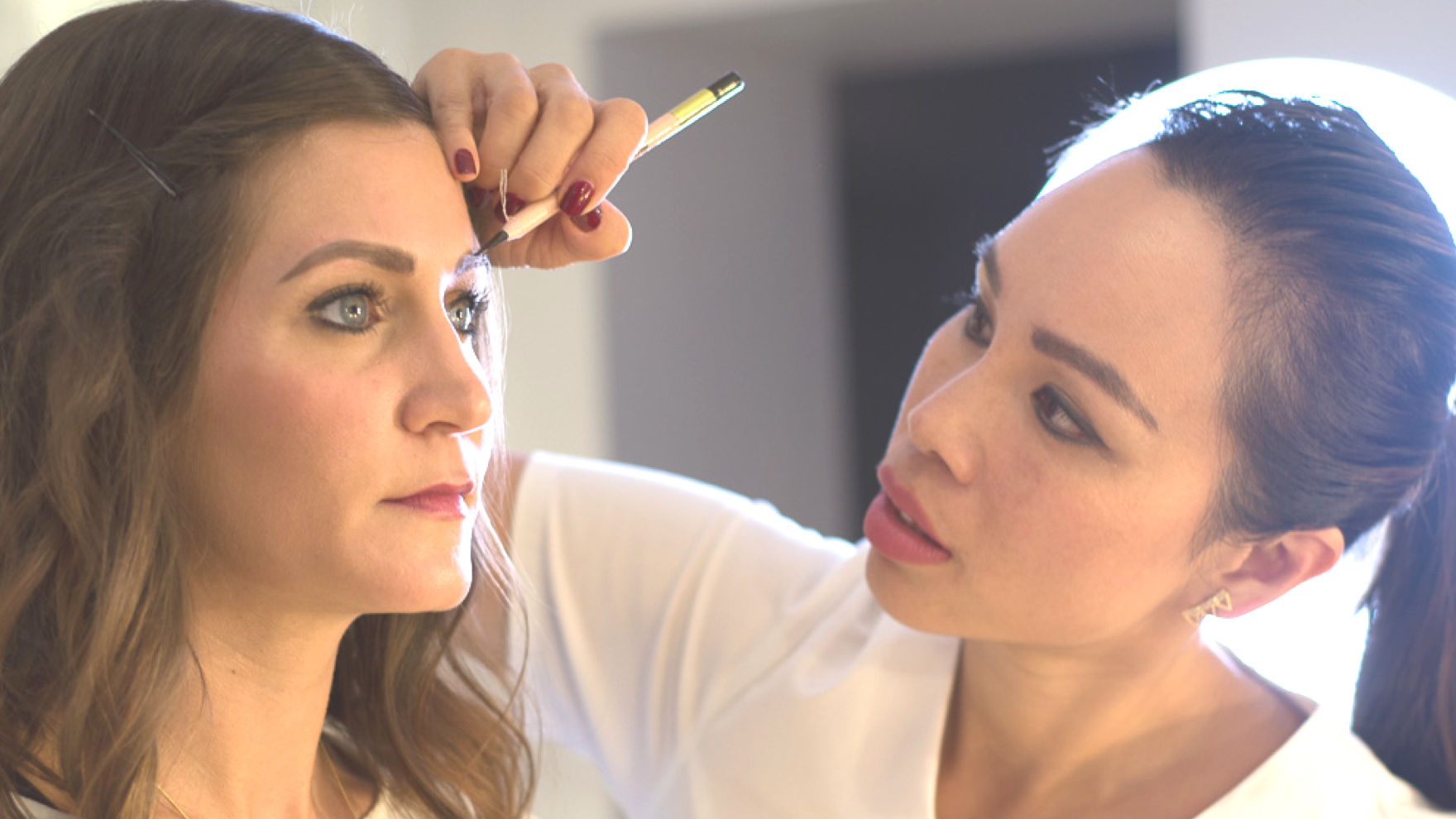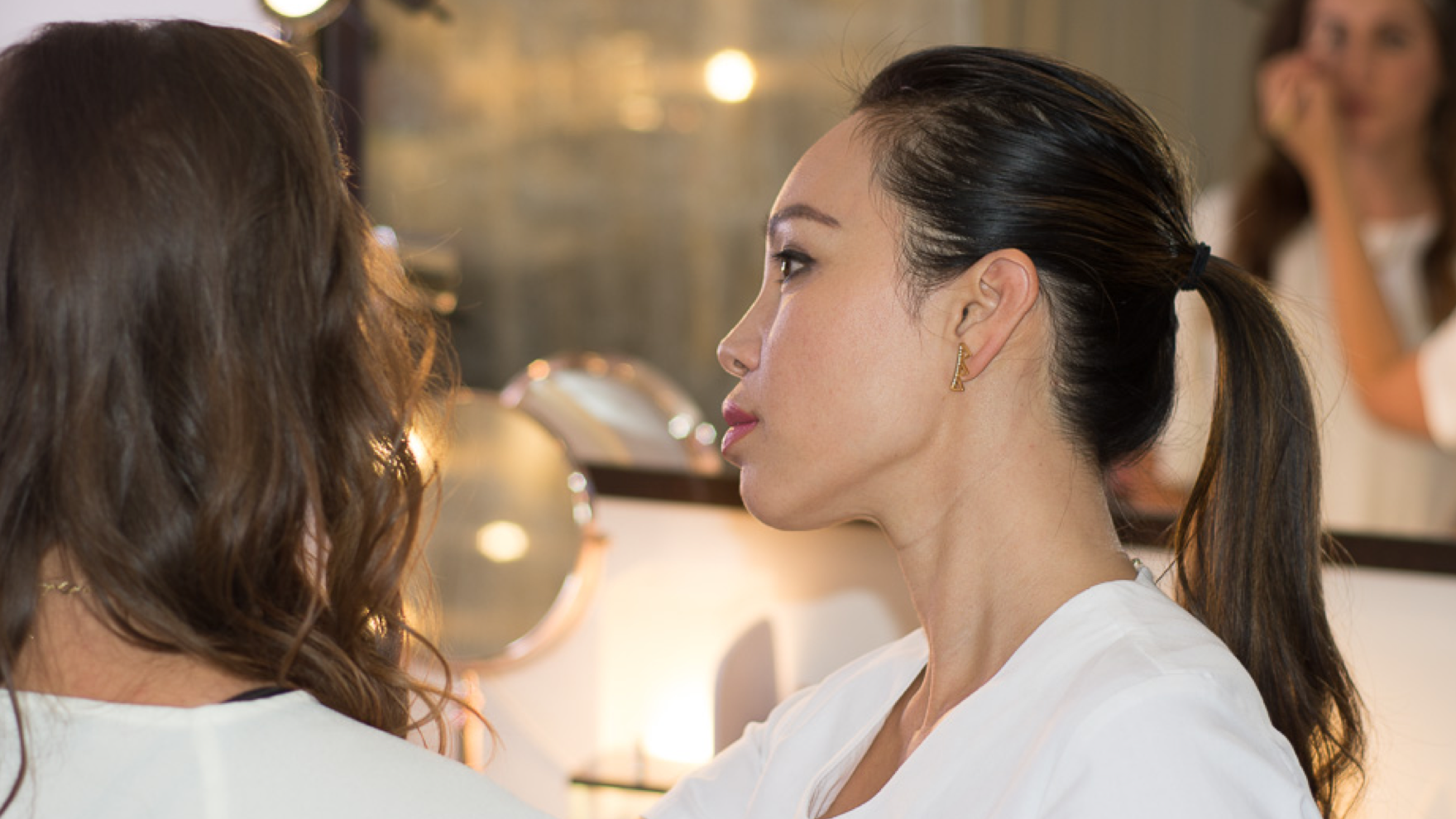
Learning to fail

“The master has failed more times than the beginner has even tried. ” - Unknown
I was browsing through Facebook marketplace recently and noticed a TON of microblading offers in my local city. There were over 100 ads! I couldn’t believe it. There were SO many kinds of different offers that were advertising services for a LOT cheaper than you would find in a salon or dermatologist clinic. There were so many calls for models too, as well as a big jump in people looking to get their art noticed and break out into the permanent makeup industry to get their career started. There were even ads promising training to artists so that they could make $300-500 an hour, fast and easy (which, by the way, doesn’t happen).

It got me thinking that there is just SO much competition out there and that there is this huge sense of desperation among artists who are finding that it’s harder than ever to get started. What a tough time it must be for everyone who is trying to build their skills and confidence, and also get noticed. Looking back, I remember how hard it was in the beginning because I was there too. I was scared shitless, and it took me years of fear, self-doubt, and perseverance to get to the point where I am comfortable and confident in my skills. Now that I’ve gotten past all of the lessons of my mistakes, I’d like to share with you some of my personal struggles. I hope that it helps you along the way.
20 years ago, I decided to get my eyebrows done with permanent makeup on a whim. It wasn’t really a popular service at the time, but I loved it! It was one of those life-changing moments when something happens and big light bulbs started going off, and I came out of the treatment room thinking, “hey, I would love to be doing the kind of art this lady is doing!” I was completely in love. That was the moment when I decided that I wanted to be a permanent makeup artist. There wasn’t a doubt in my mind until my mom shot me down (good thing I ignored my mom, just like any rebellious teenager would do).
I Googled how to take PMU courses and ended up in Washington, USA. Keep in mind, “microblading” didn’t exist in those days. It was all “permanent makeup”, a procedure that didn’t always have the best reputation (think your grandmother’s permanent makeup and you’ll get the idea). Regardless, I took a very rudimentary 3-day course and came back home, eager to start with my family and friends.
That’s when I found out how hard it actually was. My best friend was my first model, followed by dear mom. They were all in pain during the procedure and my lines were wiggly, at best. I was really just hoping that these people would still like me afterwards! I remember my best friend clutching a pillow and crying while I was trying to do her eyeliner. I just felt SO bad, but there was no way of stopping (you can’t just leave someone with a half-finished eyeliner, right?) Right away, I knew this was going to take A LOT OF PRACTICE and it wasn’t just going to be about reading and studying the material. None of my education mattered until I started touching skin, and until I started doing more of that, all of my work was going to be mediocre, at best. I did ask the artist who did my PMU if she would teach me and she said, “nope, sorry”, not wanting to give away her skills.
“I remember my best friend clutching a pillow and crying while I was trying to do her eyeliner.”
From there, I went to Craigslist and advertised for models, offering my permanent makeup services at $50 a pop, and I had 10 people come to me in the first week.
Even though there wasn’t a huge demand for permanent makeup, I knew my own experiences and knew that I liked it. It was somewhat embarrassing to admit that you were a tech, but I didn’t care because I had a good experience and I was a believer. I could be my own boss and set my own schedule - total freedom!
I began to research better pigments and better anesthetics. I reached out to leaders in the industry because ultimately, I knew that they would be the ones to go to, as they had been in my shoes and knew what had worked and what hadn’t. Eventually, I got a hold of Robyn Hays, an amazing artist who wrote part of the manual on permanent cosmetics for the SPCP, a non-profit PMU organization. I was expecting some technical tips, but instead, she gave me the best advice ever: “Just follow what the leaders are doing and copy that”. OMG. Game-changing tip!
Of course, the biggest struggle was getting clients because initially, you have no credibility. The $50 I was charging was only covering the costs of the equipment and the occasional groceries, which was definitely not enough, so I needed to hustle.
Finding models was like pulling teeth because everyone was so hesitant and could be quite demanding as well. I mean, it’s tattooing on a person’s face, and even though I totally got where they were coming from, it didn’t make it any less frustrating. Eventually, I started to get some models together who were willing to take a chance on me and let me take countless pictures of them, thus practicing my photo-taking skills.
I also knew that I needed to practice the customer service element: dealing with people, conducting consultations, engaging my sales pitch, and gaining the trust of my potential clients so that I could build a portfolio. (Remember, this was before social media, so it wasn’t always easy to get the photos that you wanted or needed for your portfolio! You had to do everything yourself with limited resources).
 At a course in England
At a course in England
From doing so many almost-free procedures, I ended up getting a job in a plastic surgeon’s office in the San Francisco Bay Area- a VERY lucky break! As result of a great introduction, I was now establishing my credibility at a doctor’s office six months after starting my journey as an artist. Shortly afterward, I met my husband, Luke, and we decided to move to Toronto, Canada. Even though I was thrilled, I found that I had to build my business all over again.
Again, I had no credit or context. I started the same formula and tried to get more models, making cold calls, knocking on doors to salons, and offering free services to show my value as an artist. This was a low time for me professionally, as the stock market was experiencing its crash and I couldn’t get a job in financial services anywhere, let alone in a new country. I found myself working in four places a week: getting up and doing someone from home, running in heels to work in a salon, taking a subway to a medical spa, and then finally traveling up to the mall to work in yet another nail salon. I was exhausted from doing all of this, just so that I could build my portfolio and try to fill up the days.
Thank God for my husband Luke! He was my rock through the whole thing. Trying to find a steady stream of work was my biggest challenge. I was emotionally defeated and was losing confidence fast. He had a background in sales, so he was already used to this. He told me that you needed to go through a lot of “no’s” before you come up with a “yes”, that it’s all part of the process, and that I really had nothing to lose. It was amazing advice, and it helped me to realize that it’s a numbers game.
My days always began making follow-up calls to clients with fingers crossed, hoping that the color stayed. Even after three years doing eyebrows, eyeliner, and lips, my results still weren’t 100% consistent, with half of an eyebrow gone or a lip color completely disappearing. I didn’t even know whether it was something I had done wrong, something the client had done wrong, the pigment, the machine, or a combination of everything. With each poor result, I felt defeated and still unqualified to do PMU with total skill and confidence. I didn’t know where to turn for advanced training either because the great artists were busy “doing”, not teaching.
Despite this, and with Luke’s encouragement, I held on and kept my chin up. I didn’t HAVE the inherent talent for tattooing. I’m not sure if anyone does. I just practiced over and over and over and over again and tried different approaches, techniques, tools, and products. Every now and then, I’d run into those crazy clients that just couldn’t be pleased and drained me emotionally. Luke told me that having those clients is a good thing, and it means that you’re busy enough to have a handful of these hurdles.
To get more exposure, I started doing trade shows, (wedding shows, women’s shows, etc.) and live demos. This helped me break into the plastic surgery and medical aesthetic field, which in turn made me VERY busy. Eventually, I no longer needed to work at the other salons and was able to work full time from my own studio. I was finally working full time as an PMU artist after five years of tireless effort, doing everything myself from cleaning the bathroom, to knocking on doors, to consultations, to handing out brochures. Still, nothing is too tedious for me. I take pride in knowing I’ve worn so many hats and would wear them again any day, even if I landed in the middle of Timbuktu.
Now, I wanted to put myself in Toronto’s best-known plastic surgery office, and from the trade shows, I got to know a spa director who was impressed by my work. Finally, I was invited to join his practice and gave away over 50 free procedures to all the girls in the office so that I could gain their trust. They became walking billboards for me. It was the best investment I ever made, although extremely costly for me in terms of time.
 With Traci Melchor from E!
With Traci Melchor from E!
I’ve learned a lot in my years as a permanent makeup artist, but if I were to give you six of the best practices and advice for starting your business, it would be these:
- KNOW THAT PRACTICE IS THE PROCESS
Here’s a fact that you will not want to hear; It will take you at least 3-5 years to even know what you are doing. Each client’s skin is different, presenting a unique set of challenges each time. Some skin is thin and sensitive, and will bleed, turn red, and swell up. Some skin is thick and won’t take color. Realize quickly that clients are fussy and unreasonable, hard to please, and will test your patience. Just take it with a smile and say, “no problem, let me adjust that for you.” The only way that you will be able to improve is to touch as much skin as possible in order to familiarize yourself with each roadblock. Each case is a stepping stone and a learning experience. Get used to honing your skills on people. Offer services to friends, family, and models for VERY cheap. You need time with the skin in order to learn about all of the scenarios you will encounter. The sooner you can learn how to work with a variety of skin and personalities, the shorter your learning curve will be.
- ALWAYS BE THE CONSUMMATE PROFESSIONAL
Put yourself in the client’s shoes. What would they want and expect from you as an artist? Obviously, your client would want to work with someone friendly and professional. Give good eye contact, keep your office pristine, and dress professionally. Think about how you’d like to be treated as a client: do you want to trust your face to a beauty professional who shows up wearing jeans, or a crisp uniform? Would you feel comfortable in a small, cozy, decorated room, or a clean and sterile type of room? Do you expect your messages to be returned in 24 hours? Answer all questions before they are even asked to provide assurance and expertise. Similar to the kind of service you’d like to receive from an aesthetician, think about creating the absolute best experience that you can for your client. Never act out of emotion and remember that the client is always right. Just bite your tongue and move on to solutions, not excuses.
- HONE YOUR PITCH
I always start each meeting with, “Tell me your wish list; what’s your goal?” The perfect consultation is about listening to what the client wants and explaining your approach to solving their problems, including them in the design process, and letting them know what to expect every step of the way. This way, they feel secure, confident in your skills, and know that you are the expert. You always want to let your client feel that they have control and that you, the artist, are guiding them. Never say anything that would make them feel stupid such as, “you’re drawing your eyebrows all wrong”. Instead, say, “together, we can design new eyebrows for you that will brighten your eyes and make you look younger”. Get the idea? Always say positive words. The consult, your mannerisms, and the follow-up are just as important as the technical procedure itself.
- NEVER STOP LEARNING
You know those pros you’ve been following on Instagram or Facebook and whose every pic have been saved for your own inspo? Make it your goal to a take a class from them next year. Yes, they may be far away, but the knowledge and skill that they can pass to you will be PRICELESS. Learn how you would like your business to be by watching the expertise of others. Avoid big classes, as they lack the attention that you will need in order for an instructor to properly critique your technique and identify weaknesses in your hand movement, speed, or needle entry angle. Never be afraid to ask a trainer for a call before choosing his/her class. If the relationship is off to a bad start, it’s good to find out sooner than later.

Teaching the first ever microblading course in the US, 2013
- BE A CUSTOMER FIRST
Have someone perform the procedure on you. Only through having it done will you know what to expect and how it will feel for your client. You need to feel the pain, the anxiety, and witness the day by day healing process and subsequent result. This will give you excellent reference points. Plus, it’s hard to sell something you don’t have. Make sure you choose the best artist for this procedure and pay them just like any paying client. When your permanent makeup looks amazing, women will just say, “I want what you have!”.
- DON’T BE CHEAP
Instead of seeing your client two times for their procedure, see them three times so that you can check the results of their follow-up. This will allow you to examine the results of your work following the touch-up so that you can make notes and adjust your technique if your results are less than perfect (which they will be). Just having the client send a pic WILL NOT suffice (this is the cheap and lazy way). You need to see all the skips and flaws in your work so that you can shorten your learning curve. Spending this time benefits not only your client, but also yourself. Don’t be cheap with your education and products either. You can’t expect to be the best with subpar education or products!
“Where is there no struggle, there is no strength.” -Oprah Winfrey
I know you want to start making money right away, but let’s be honest, that just doesn’t happen on any planet. The secret to success is that there is no secret, just the work. Know and accept that the learning and failing is part of the journey, and that each case is a stepping stone.
I’m still doing things that scare me. Developing products for you guys, doing live interviews, and speaking in public, but I do it anyway, despite losing months of sleep before I step on a stage at a PMU convention to talk about my work. But all the same, I keep going because I love how PMU changes lives. Knowing how hard it is, I hope to give guidance and comfort to artists on this journey. You WILL find your sweet spot, and one day, you will look back with so much pride for all of your hard work. Your success is something you will earn and nobody can take that away from you.
See you at the top!
Tina
Instagram and Facebook @tinadavies




Leave a comment
This site is protected by hCaptcha and the hCaptcha Privacy Policy and Terms of Service apply.